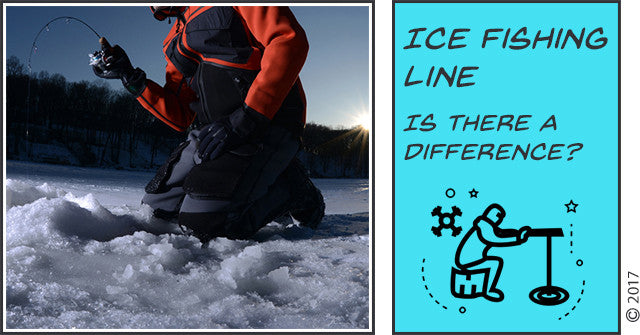We’re not sure how things are looking in your corner of the world, but it’s been an awfully warm January here at the TYEPRO headquarters in Columbus, OH. Unfortunately, if you’re an ice fishing enthusiast, you may have to resort to open water angling for the time being. On the positive side, this gives undecided hobbyists more time to decide whether this is the year they give ice fishing a try. If you still aim to give it a shot, you’ll need to buy the necessary equipment: ice picks, a spud bar...maybe even a radar device or shanty to help you out.
But what about fishing line? Will the same spool of line that you use during the rest of the year bring you success on the frozen lake? There’s some disagreement over this. Some hobbyists will insist that an angler with the proper lure is only wasting cash on a new spool. Many professionals insist on using ice fishing line, however.
So what’s the difference?
Line memory is a major issue that ice fishing lines are designed to prevent. Ask any runner: It’s much easier to stretch and get loose when the temperature is warmer. There’s a difference in temperature of about 34°F from August to January on Lake Erie...and that will increase line stiffness greatly.
There are many all-season lines that combat line memory, but manufacturers also treat ice fishing line with anti-freezing compounds. This prevents ice-based line memory and, of course, your line from freezing to your rod.

There are two other qualities that come built into ice fishing line, but these can also be found within standard open water lines.
The first relates to the process of dropping and reeling in a line while ice fishing. The difference between that and warm weather angling is the hole in the ice, obviously. And holes in the ice, especially when drilled by hand, often have sharp or rough edges. This can damage your line as it brushes against the walls of the hole. Therefore braided line might be a better option than monofilament, thanks to its relative strength.
The problem is that braided line also tends to be more opaque than monofilament. Those familiar with fly fishing or bass fishing might not consider that the line moves much less during ice fishing, relatively, to those more active forms. The less a line moves, the more likely a fish is going to be able to detect it. Anglers will want to take all steps necessary to make their line undetectable, which means opting for cooler colors, such as blue or dark green,
Fluorocarbon ends up being one of the favorites for ice fishing because it is stronger than monofilament and more abrasion-resistant. Fluorocarbon lines also sink faster than mono which makes for a more natural fall for light-weight ice jigs. Therefore many brands, such as Berkley and Sufix, offer ice variants that are made of fluorocarbon. Many also offer braided ice fishing line, however, for fans of that material.
The good news: Buying 75 yds of Berkley’s Trilene ice fishing line costs the same as its standard lines at most retailers. Investing in a new spool of line won’t set you too far back...especially if the line you currently use doesn’t live up to the standards explained above.
If only we could afford a plane ticket to somewhere with ice, then we’d be set!
If you’re concerned with tying that line in cold temperatures, don’t forget that TYEPRO offers the Fly & Ice tool. This helps tie many ice jigs from 1/32 to 1/8 ounces and hooks from size 10 to1, . As our customer Chris K. noted, “Love how easy it was to use in the sub freezing temperatures and I didn't need my reading glasses!"


